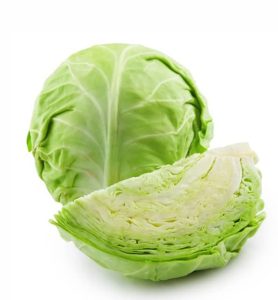- Botanical Name & Family: Brassica oleracea var. capitata, Brassicaceae (mustard family).
- Plant Description: Leafy green, red, or white biennial plant grown as an annual for its dense-leaved heads (0.5-4 kg). Descended from wild cabbage. Fibrous, shallow root system. Produces yellow/white flowers in the second year.
- Cultivation Tips: Cool-season vegetable, thrives in 4-24 °C. Prefers well-drained, fertile soil (pH 6.0-6.8). Start seeds indoors 6-8 weeks before last frost. Space plants 30-61 cm apart. Requires consistent moisture and adequate nitrogen. Harvest when heads are firm and solid.
- Ayurvedic Description: Pacifies Pitta and Kapha, may aggravate Vata unless well-cooked. Considered alkalizing, relaxing, anti-inflammatory. High in fiber, promotes healthy bowel movements. Contains glucosinolates. Best eaten well-cooked with spices and oils to aid digestion.

Nutritional profile of seasonal vegetable (per 100g raw edible portion):
| Vegetable | Botanical Name | Calories (kcal) | Carbohydrates (g) | Protein (g) | Fat (g) | Fiber (g) | Key Vitamins | Key Minerals |
| Cabbage | Brassica oleracea | 25 / 18 | 5 / 4 | 2 / 1 | 0 / 0 | 2 / 2 | C (44% DV), K (72% DV), B6, Folate | Ca, Fe, K, Na |
